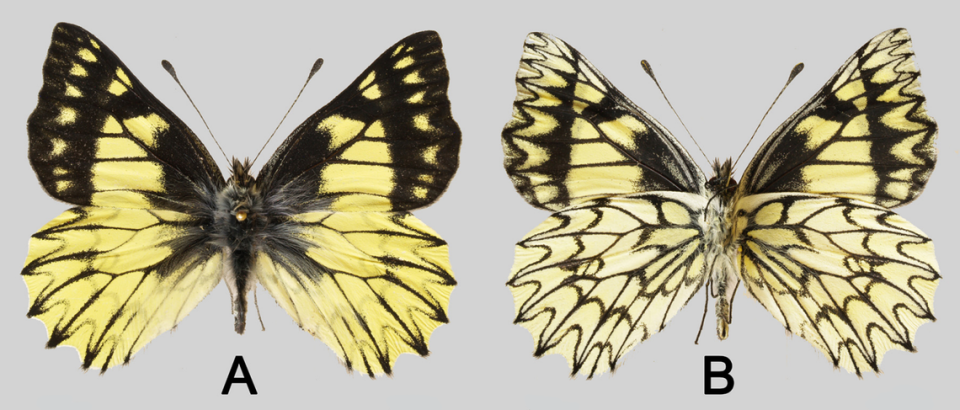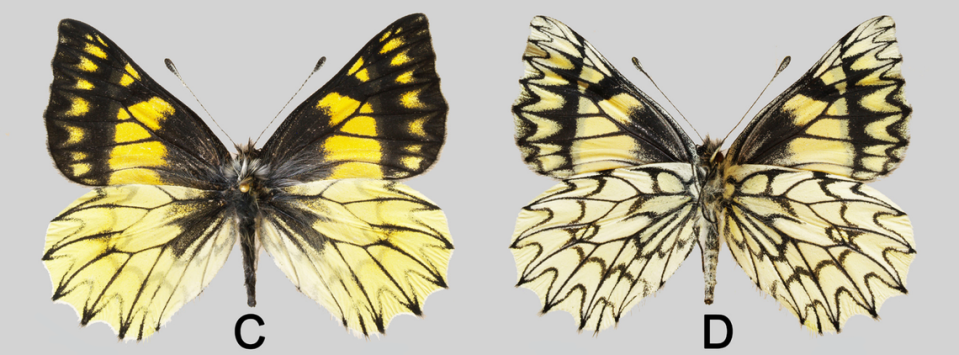‘Strongly territorial’ creature found way up in mountains of Peru. It’s a new species
High up in the mountains of Peru, a bright yellow creature staked out a “strategic spot.” It fluttered around waiting for an attractive female to pass by and chasing away anything else that dared approach.
Scientists spotted the “strongly territorial” insect — and discovered a new species.
Researchers climbed aboard a helicopter and flew into the Andes mountains in 2021, according to a study published Aug. 24 in the journal Zootaxa. They landed near the treeline just over 2 miles high.
Among some yellow flowers, researchers found several “rich yellow” butterflies eating, the study said. Intrigued, they captured 15 specimens and determined they were a new species: Catasticta copernicus, or the Copernicus dartwhite butterfly.
The Copernicus dartwhite butterfly has a “rich yellow” color with a black pattern, researchers said. It can reach just over 2 inches across and is “considerably larger” than other butterflies its related to. Researchers described it as a “beautiful, ‘sunny’” animal.
Photos show a male and female Copernicus dartwhite butterfly. Seen from the top, the butterfly has a zigzag black pattern along most of its wings. The top edge has thick black bands with yellow patches. Seen from the bottom, the butterfly has a paler yellow coloring, and its black pattern looks almost like a spider web.

While on their mountain expedition, researchers observed the mating behavior of Copernicus dartwhite butterflies. “Strongly territorial” males pick “strategic spots” along the trees and chase away other butterflies or insects that approach, the study said. When females fly by, the males chase after them.
Copernicus dartwhite butterflies were also “frequently found feeding on the yellow flowers,” researchers said. The species was found in two locations, Ayacucho and Apurímac in south-central Peru.
Researchers named the species after the 15th century astronomer Nicolaus Copernicus.

On another survey in the mountains of Junín province, researchers spotted a different yellow butterfly “patrolling above the bushes.” They captured 27 specimens and, upon taking a closer look, discovered a second new species: Catasticta buszkoi, or Buszko’s dartwhite butterfly.
Buszko’s dartwhite butterfly is a lighter yellow color and measures less than 2 inches across, the study said. Photos show the butterfly’s dark black patterning. Its underside looks almost like a stained glass window.
Researchers named this species after Jarosław Buszko, “an eminent Polish entomologist,” the study said.

The new species were identified by their size, pattern, color and genitalia, researchers said. DNA analysis confirmed the new species were distinct from other dartwhite butterflies.
Junín province is about 140 miles northeast of Lima. Ayacucho and Apurímac are nearby areas about 350 miles southeast of Lima.
The research team included Tomasz W. Pyrcz, Christer Fåhraeus, Pierre Boyer, Oscar Mahecha-J., Jadwiga Lorenc-Brudecka, Kamila S. Zając, Keith R. Willmott and Sebastián Padrón. Researchers also studied several other butterfly species.
Pregnant creature hiding in desert bushes turns out to be new species in Argentina
Bumpy baby creature found on ‘sky islands’ in Vietnam — and discovered as new species
Tiny ‘pear-shaped’ critter with craving for ants found in rainforest. See new species

